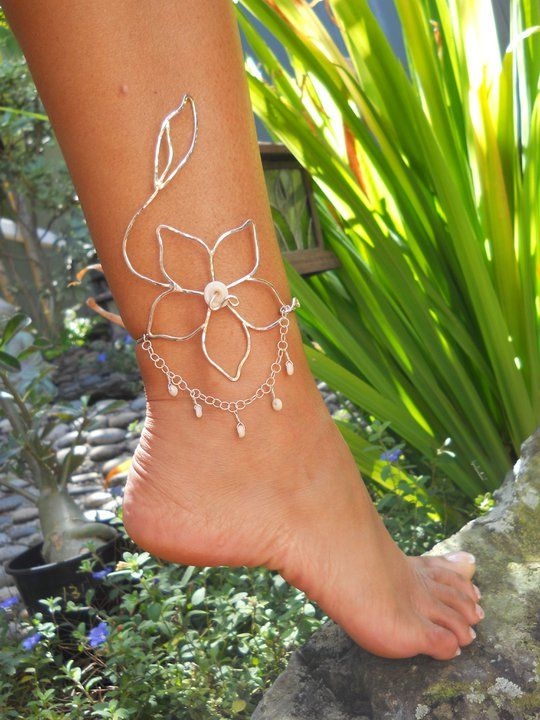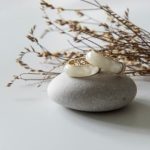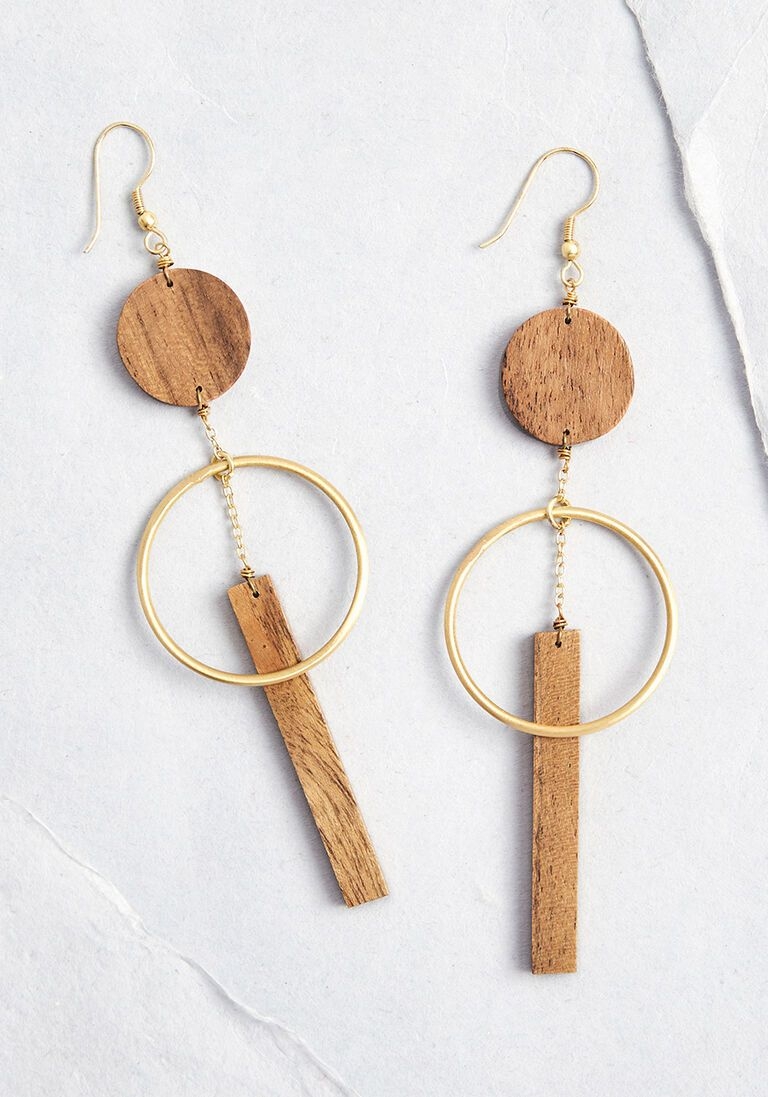Paper jewelry making materials is an excellent way to create beautiful and unique pieces that require minimal expenses. Inexpensive supplies and tools are all you need to start creating paper jewelry. You can use different materials such as crepe paper, craft paper, origami paper, or any other type of specialty paper available for crafts. Beyond traditional paper supplies, more innovative items have become available for crafting jewelry out of, such as washi tape or thread-through beads.
Creating paper jewelry has a number of advantages over more traditional metal-based casts or beads. For one thing, the environmental impact is much lower from the production and manufacturing process.
It will also cost a fraction of the price compared to more complex metal based jewelry designs while still maintaining its unique look and feel. Furthermore, the amount of space needed to work in and store your supplies is much less than with precious metals since it is so lightweight and you can store away your projects on bookshelves instead of occupying drawer space with heavy metals and stones.
More people are diving into craftsmanship using paper when it comes to making jewelry due the ease of learning the steps involved in creating beautiful unique pieces in comparison to more difficult arts like sculpting or welding. Paper projects are relatively safe for beginners, accessible to an array of ages, include minimalist needs for tools & equipment (ie: scissors/tweezers) as well as allowing many decorative touches through customizing textiles or patterns while occupying a relatively small working space at home.
Types of Paper Jewelry Materials
Many different types of paper can be used to make jewelry. While traditional cardstock and tissue paper are the most popular choices, there are a few other options that may suit your needs. These include:
- Cardstock – Cardstock is a higher-quality paper that generally has a glossy finish. It’s thicker than standard printer paper, so this makes it an ideal choice for earrings, necklace charms, and bracelets.
- Tissue Paper – This type of paper is lightweight and fairly thin but strong enough to hold shapes. Usually in neutral colors or floral designs, tissue paper can be used to create delicate jewelry pieces.
- Vellum – Vellum is made from either animal scraps or treated cotton and is known for its translucency. Whether cut into ornate frames or used to add dimension and texture to pieces such as pendants, vellum adds an extra flair to your paper jewelry project.
- Etching Paper – Etching paper is thin yet robust, which makes it an excellent choice for creating layered effects with multiple colors. It’s also great for laser cutting complex shapes while still maintaining accurate detail.
- Foil Paper – Foil papers come in various sizes and finishes and can provide unique visual interest on your jewelry creations. They’re often sold pre-cut in geometric patterns, making them incredibly easy to incorporate into your work.
One should also consider all the additional tools required when making paper jewelry. Some popular tools used when creating these projects include punches (for cutting intricate shapes), bead boards (for organizing items dimensionally), adhesive (for affixing elements together), varnishes (to protect finished pieces), decoupage glue (to secure designs more firmly,) tweezers (for working with smaller objects,) and scissors/knives (for more detailed cutting).
Each tool serves its own purpose when crafting items from these special papers; however, one should always be mindful of safety precautions such as wearing eye protection when using sharp items or blades.
Paper Jewelry Making Tools
Paper jewelry making is a fun and creative way to create jewelry at home. To get started, the right materials and tools are essential for success. Here’s an overview of some of the components you should have on hand for paper jewelry making projects.
First, you’ll need cutting tools. It’s important to select ones that are best suited for different types of paper jewelry pieces. For example, precision paper cutting scissors are ideal for more intricate cuts such as those needed to create small charms or earrings.
Small metal rulers can also be useful when cutting geometric shapes such as triangles or rectangles out of paper strips. Alternatively, die-cuts or punches can be used to cut out complex shapes quickly and easily; these punches come in various sizes, from small circles up to larger flowers or stars.
The second key component you’ll need is adhesive materials for joining your finished pieces together; this may include a variety of glues formulated specifically for use with different types of papers such as PVA glue which works well on cardstock and other thicker papers. Hot glue guns are especially helpful if you’re working with heavier components like buttons or faux gemstones which need to be secured permanently in place.
Double-sided adhesive foam tape is another great tool to have on hand, as it will work with any type of craft paper while providing a neat finish without bulky strands of hot glue showing through your design.
Finally, supplies such as felt-backed jump rings and earring hooks may be necessary depending on the type of project; many craft stores sell packs containing assorted sizes for convenience and affordability. Beads also add texture and dimension to the overall look; brightly colored plastic beads can be used to contrast against matte cardstocks while wooden beads will lend a natural feel to your creations.
All these items – and more – can usually be found in any local craft store or online retailer dedicated to jewelry or crafting supplies.
Design & Technique Tips
Start Simple – Choose a Basic Design
When beginning paper jewelry making, start with something basic such as bracelets and simple earrings. Beginners should avoid complicated designs at first – it’s best to stay away from intricate patterns and fancy shapes. It’s more important to master the basics before trying any complex designs. Starting with simpler pieces allows beginners to get comfortable and become familiar with the craft process.
Think Outside the Box – Make Your Jewelry Stand Out
Once you’ve got the hang of creating basic pieces of jewelry, move on to using materials in unique ways. Add textured papers for a unique look or use colors that add contrast and dimension to your creations. You can even use multiple types of paper to form shapes that will make a bold statement. To help create dynamic jewelry designs, think outside the box by using supplies in a creative, innovative way.
Experiment With Techniques
Creating interesting effects in paper jewelry is easy when you experiment with different techniques such as layering, stitching, and painting. These techniques can help give your jewelry pieces more texture and depth or create an unexpected twist that will make your work stand out from others’.
Try using various mediums such as ink, fabric paint, watercolor, or wax crayons on your pieces for added drama and flair; you’ll be surprised how many looks you can achieve just by playing around with different materials.
Adding Embellishments
Embellishments are essential for personalizing and adding interest to paper jewelry designs. Handmade charms and beads can be made from folded scraps of decorative paper, used as pendants or incorporated into earrings. Not only can scrap paper look beautiful when properly decorated, but handmade charms and beads cost significantly less than store-bought alternatives. Charms and components can also be altered by cutting away elements or adding on decorations using glue, paint, or colorful marker pens.
Embellishments don’t have to come in the form of jewelry components either; paper jewelry designs can also benefit from the addition of non-traditional elements such as metal findings, ribbons, tassels, feathers and more. Metal findings are often used to add strength to a design whilst simultaneously elevating the aesthetics.
When incorporated with wire and jump rings, they can be used as connectors to create an elaborate necklace piece or charm. Ribbons offer both shape and movement to any piece of jewelry when intertwined amongst paper beads; simplifying knotting techniques make it easy for anyone to get creative with their own unique pieces of design.
Incorporating tassels is another way to create interesting shapes within your paper jewelry designs. Tassels are easy yet effective embellishments that often come in a variety of materials such as wool or thread wrappings around bead stems giving an extra texture where desired; alternatively they may be made up of ribbon slices cascading down one single strand allowing them to be thrown over ones shoulder for a more stylish look.
Other popular embellishments include small features such as sequins, buttons and baubles – which instantly inject sparkle and texture into a design making them extremely eye catching pieces fit for any occasion enhancing each creation with its unique appeal inspired by nature.
Color Theory and Combinations
Color is a powerful tool in jewelry making that can heavily influence the final design. When selecting colors for any project, having knowledge of color theory can be extremely beneficial in achieving the desired effect, including its role within paper jewelry creations. After all, colors possess emotional value that can be used to appeal to an audience’s senses.
In its simplest form, paper jewelry makers need to understand three basic concepts of color: name and color identification, hue and tint, and harmony and contrast. Name and color identification involves being able to identify different primary and secondary color combinations which open up an array of variations.
The latter two concepts encompass the deeper aspects of understanding how colors work together through various groupings; hue indicates the strength or intensity of a color while tint implies that white has been added diluting the strength slightly.
Harmony refers to different combinations many of which have distinct names such as monochromatic, complementary, analogous etc. These forms use two or more colors next to each other on the wheel while contrast deals with intense colors brought together creating memorable shapes and design.
When it comes down to actually creating beautiful jewelry pieces with vibrant hues, there are several methods that make choosing colors easy for even novice paper creators. A standard way is with a visual aid known as a ‘color wheel’ which naturally lays out all primary, secondary and tertiary hues in order along with their various makes – primary tones are wildly bright yet brash whereas tertiary appear more natural like muted pastels.
This painted circle proves ideal for selecting fresh palettes by displaying how each conventional harmony operates against one another using actual paint swatches.
- Name/ Color Identification: Primary + Secondary Colors And Their Variations
- >Hue & Tint: > Intensity Of A Color + What Happens When White Is Added
- >Harmony & Contrast: > Types Of Colour Combinations + Vibrant Color Placement
- >Color Wheel aid: > A Visual Guide Displaying Primaries/Secondaries Along With Paint Swatches
Paper Jewelry Care Tips
Paper jewelry is a beautiful, unique way to express yourself, but it needs special care and maintenance to ensure its longevity. The following are some tips for taking proper care of your paper jewelry.
- Cleaning Paper Jewelry: To clean paper jewelry, start by using a soft cloth or brush dipped in cool water to gently wipe away any dirt or dust particles on the surface of the item.
- Storage of Paper Jewelry: When storing paper jewelry, make sure you use protective plastic coverings or store them in small fabric pouches, as this helps prevent moisture and other environmental elements from damaging them.
- Gifting and Shipping: When shipping paper jewelry for a gift, make sure to include enough cushioning material so that it is not jostled around inside the package during transit. Small bubble wrap or tissue paper should be sufficient for this purpose.
To further protect your paper pieces from potential damage during wear or storage, it’s helpful to add an extra layer over them. A thin sealant can be applied with a brush in even strokes across the entire surface of the item.
Be aware that sealants containing solvent might affect colors and make them run if they are not applied carefully. If you’d like more protection for your paper jewelry pieces, there are also various sprays that contain metal finishes that can give your items a metallic tint.
With proper care and maintenance, your pieces will continue to stay looking beautiful for years to come.
Conclusion
Paper jewelry making is a simple and cost-effective hobby that anyone can enjoy. With just a few materials and tools, you can create beautiful pieces of art from paper.
This blog post outlined the various paper jewelry making materials that are required for creating your own pieces, such as basic color paper, specialty papers like washi tape or crepe paper, craft glue, scissors, and string. Many other materials can be used to enhance your projects such as beads, wire, glitter, sequins, and stencils.
When it comes to selecting the best paper for your project. It is important to keep in mind the type of design you wish to make – whether it’s earrings, a necklace or a bracelet – as this will determine which type of paper works best. For instance, when making earrings, using card stock or craft foam can provide more stability than regular printer paper; however when making necklaces or bracelets use art tissue paper instead for enhanced flexibility and volume.
Other specialty papers like washi tape provide an interesting texture and patterned results for original designs with a touch of shine etc When constructing your piece of jewelry be sure to always experiment with different techniques before deciding on the final look of the product. Remember that you are not limited by material so don’t be afraid to play around until you come up with something unique.
Finally one key tip – when gluing any kind of material together – whether its threading cords through beads or attaching two pieces of paper together use glue sparingly as too much glue results in an inconsistent finish.
One helpful resource on creating jewelry from recycled materials is CraftNectar’s ‘Top 10 Crafts Using Recycled Materials’ blog post which offers great advice on how beginners can get started with their craft projects. If readers have any questions about these types of crafting please feel free to leave them at the end of this article where I’ll do my best to answer them all.

Welcome to my jewelry blog! My name is Sarah and I am the owner of this blog.
I love making jewelry and sharing my creations with others.
So whether you’re someone who loves wearing jewelry yourself or simply enjoys learning about it, be sure to check out my blog for insightful posts on everything related to this exciting topic!





